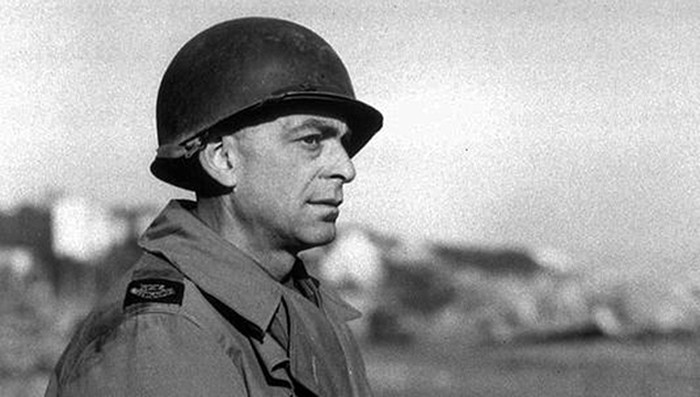
“The action was quickly overshadowed by greater events, just as the traditional role of the cavalryman was overtaken by the realities of modern warfare.”
By Alexander Zakrzewski
ON THE morning of Sept. 7, 1914, Lieutenant-Colonel David Campbell, commander of the British Army’s 9th Lancers, was reconnoitering with about 30 men near the French village of Montcel-Frétoy, when he heard rifle fire in the distance.
It was the second day of the Battle of the Marne, the massive Allied effort to blunt the German drive on Paris and thwart the Kaiser’s plans for a quick and decisive victory on the Western Front. The trench war had not yet begun, and cavalry on both sides still had a crucial role to play.
Campbell was the epitome of the swashbuckling cavalry officer. A champion jockey and polo player, his nickname was “Soarer” after the horse on which he had won the Grand National in 1896. Just days earlier on Aug. 24, he had led the 9th Lancers in a costly and futile charge against German guns at Elouges, surviving unscathed.
Campbell positioned his tired men behind a haystack then rode out alone towards a nearby wood to see for himself what was going on. It was only 7:45 a.m., but the temperature that September day was already scorching hot; the heat haze made visibility difficult.
As he approached the wood, he spotted beneath the trees over a hundred Prussian Guard Dragoons. The enemy spotted him and gave chase. Campbell wheeled about and raced back to the haystack to alert his men. “Follow me, gentlemen,” he ordered coolly, and galloped towards the Germans, well ahead of his men.
From the village, the American journalist Frederic Coleman watched what was happening from the safety of his motorcar. He marveled at the way the German horsemen, “magnificent in the morning sun,” rode in a perfect line as though “mechanically propelled.” He also noted Campbell and his men, “riding like mad, full tilt” at the enemy.
As the two sides neared each other, the Germans lowered their lances to form, what Coleman described as a “disagreeable-looking wall” of steel blades. Campbell made straight for the troop leader and shot him down with his pistol, but was himself almost immediately knocked off his horse.
A furious melee ensued as his men smashed into the left side of the German line. Horses collided and reared, sending their riders crashing violently to the ground. One British trooper later told Coleman that he ran his lance into a German with such force that “his hand touched the doomed man’s breast.”
For the last time in British military history, lance met lance in bitter mounted combat. Sergeant James Taylor narrowly dodged the lance of the first Dragoon he met, cutting him down with his sword. As he watched Corporal Bolte skewer a German a few feet away, he was stabbed in the back and knocked unconscious. He survived, waking in a horse ambulance after the fighting.
The speed and surprise of the British charge shook the Germans, but their superior numbers soon began to tell. After about 15 minutes of fierce fighting, Major Beale-Brown rallied his Lancers and made for the village. The Germans initially gave chase but soon withdrew towards their own lines.
British casualties were three killed and five wounded. Among the dead was Lieutenant Allfrey, who perished while trying to a pull a German lance from the shoulder of Captain Reynolds. Reynolds survived despite his grievous wound.
German casualties are unknown, but based on eyewitness accounts, are likely to have been much higher. Brigadier-General Henry de Lisle, commander of the 2nd Cavalry Brigade, arrived on the scene to find a trooper pulling his bloody weapon from the German he had impaled.
“Look, there is even blood on me ’and,” the trooper exclaimed proudly. Nearby de Lisle noticed another dead German literally pinned to his horse by a lance, the poor animal trying desperately to shake him off.
Campbell was found by a medical officer sprawled out in a field of clover with a pistol wound in his leg, a lance wound in his shoulder, and a sword wound in his arm.
“I am sorry to find you like this, sir,” said the officer. But Campbell, true to his reputation, was ecstatic: “Not at all, my boy! Not at all! I’ve just had the best quarter of an hour I’ve ever had in my life!”
The action at Montcel-Frétoy was quickly overshadowed by greater events, just as the traditional role of the cavalryman was overtaken by the realities of modern warfare.
However, the action understandably has a special place among British cavalry regiments to this day. In 2014, the 100th anniversary of Montcel-Frétoy was commemorated in a ceremony in France. The following year, the 9th Lancers were amalgamated with other regiments to form a single armoured cavalry regiment, the Royal Lancers.
Alexander Zakrzewski is a Toronto-based freelance writer with a passion for military history. He’s currently working on a book about obscure First World War battles and stories. Find more of his MHN contributions here.












1 thought on “The Battle of Montcel-Frétoy — History’s Last Fight Between Mounted Lancers”